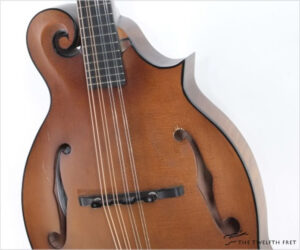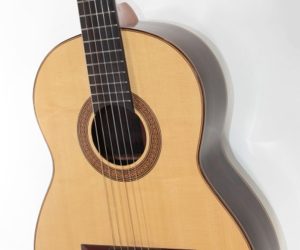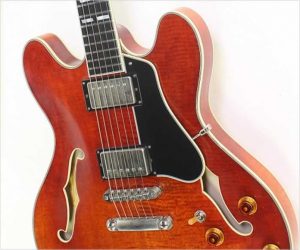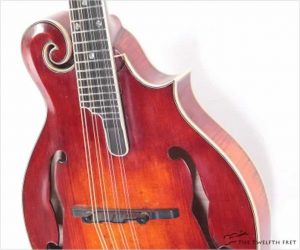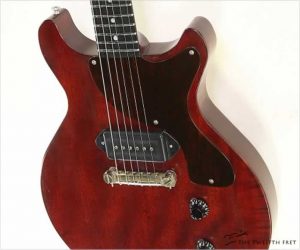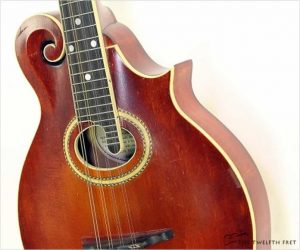The Gibson F9 mandolin is a ‘no frills’ model featuring a carved and tuned spruce top and flame maple back, flame maple sides and neck, and an Ebony fingerboard, bridge and head plate with Mother of Pearl script Gibson logo. Only the top is bound, and the instrument sports a satin finish in a vintage brown tint. As stock, there is no pickguard.
This instrument has sold
MORE →